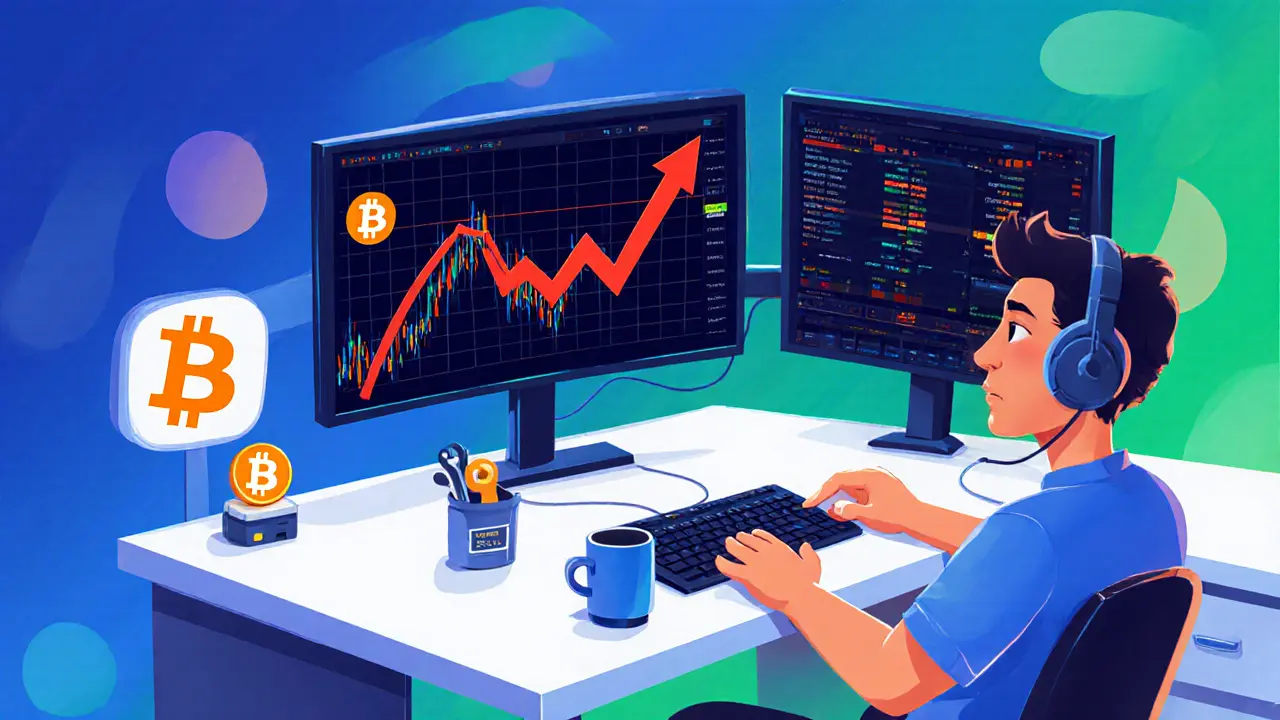Learn proven Bitcoin futures trading strategies, from basic directional bets to advanced hedging, leverage, and AI‑driven automation, with real‑world examples.
Bitcoin Futures: How They Work and Why They Matter
When talking about Bitcoin futures, a type of derivative that lets you bet on Bitcoin's price without holding the coin itself. Also known as crypto futures, they let traders lock in a price today for delivery tomorrow, next month, or even later. Futures contracts, standardized agreements traded on exchanges are the building blocks of this market, and they bring leverage, hedging, and speculation together in one package.
To use Bitcoin futures you need margin trading, the practice of posting collateral to control a larger position. This means a small amount of capital can control a big bet, but it also raises the risk of liquidation if the market moves against you. The relationship is simple: Bitcoin futures require margin, and margin determines how much exposure you get. Many traders combine these tools with technical analysis and on‑chain data to time entries and exits.
Why Regulated Exchanges Are Crucial
Not all platforms are created equal. Regulated exchanges, those authorized by financial watchdogs like the CFTC or FCA provide safeguards such as insurance funds, transparent reporting, and strict anti‑manipulation rules. That safety net matters when you’re dealing with leveraged positions that can swing wildly. In contrast, unregulated venues may offer higher leverage but lack the consumer protections that keep markets orderly.
The broader ecosystem is called crypto derivatives, financial products whose value is linked to an underlying crypto asset. Bitcoin futures sit at the heart of this space, influencing everything from perpetual swaps to options. The ecosystem creates a feedback loop: robust futures markets improve price discovery, which in turn fuels better derivative products.
Understanding how these pieces fit together helps you avoid common pitfalls. For example, many newcomers mistake futures contracts for simple buys; they forget that futures expire and require roll‑over strategies. Others jump into high‑leverage trades without accounting for funding rates, which can erode profits over time. By recognizing the role of margin, settlement dates, and exchange regulation, you can craft a plan that matches your risk tolerance.
Market analysis for Bitcoin futures also leans on on‑chain metrics like hash rate, miner revenue, and UTXO age. These signals often precede price moves, giving traders an edge when they align on‑chain data with futures price action. Combining fundamentals with technical charts creates a more rounded view than looking at price alone.
In practice, a solid strategy might involve opening a long futures position on a regulated exchange, setting a stop‑loss based on recent volatility, and adjusting margin as the trade progresses. You could also use futures to hedge an existing Bitcoin spot portfolio, locking in gains while the market stays uncertain. The key is to treat each contract as a separate instrument with its own risk profile.
Below you’ll find a curated set of articles that dive deeper into each of these topics—how futures contracts are structured, the nuances of margin trading, the best regulated platforms, and the latest trends in crypto derivatives. Whether you’re just starting out or looking to sharpen your edge, the collection offers practical insights you can apply right away.

